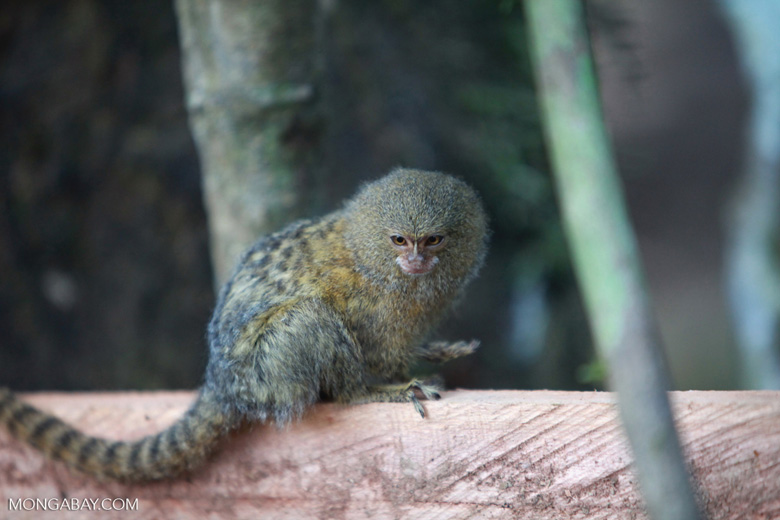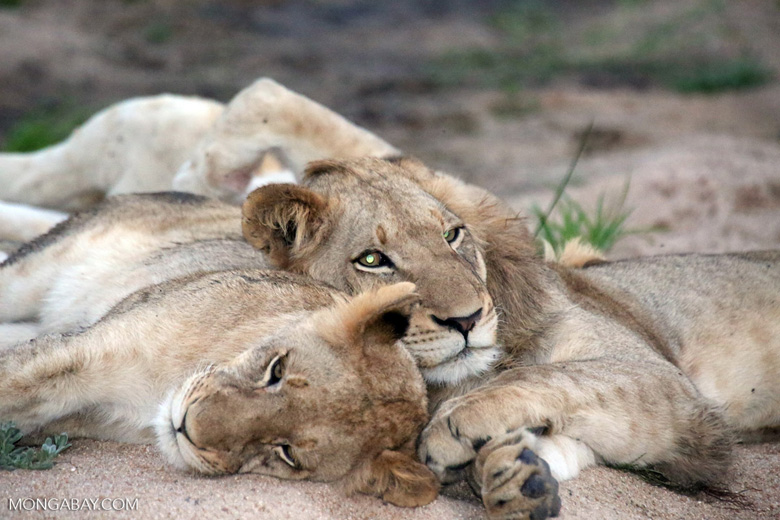- A report sponsored by the U.N. pulled from approximately 3,000 scientific papers and revealed that 40 percent of invertebrate pollinator species are facing extinction.
- The Convention on International Trade in Endangered Species of Wild Fauna and Flora (CITES) is working toward improving the treatment of the animals that are caught and sold around the globe.
- In order to protect biodiversity from salt pollution of freshwater, scientists are calling for a global change in the way we regulate the salinity of freshwater sources.
An in-depth look at our pollinators raises major concerns about world food supply [NPR]
A report sponsored by the U.N., pulled from approximately 3,000 scientific papers and revealed that 40 percent of invertebrate pollinator species are facing extinction. While vertebrate pollinators are in a better position with 16 percent of them being threatened with extinction, the overall trend of our pollinators, who we depend on for 75 percent of the world’s crops, is raising many concerns.
China’s “Year of the Monkey” is setting a dangerous trend [Mongabay]
The “year of the monkey” dawned recently in China – and with it, a trendy new exotic pet; pygmy marmosets. The Internet has exploded with photos of the so-called “thumb monkeys,” while conservationists and primate scientists are lamenting the situation.
A more humane wildlife trade? [National Geographic]
The terms “humane” and “wildlife trade” aren’t two that most people would pair together, but this combination is the very basis of a new plan regarding the welfare of animals. The Convention on International Trade in Endangered Species of Wild Fauna and Flora (CITES) is working toward improving the treatment of the animals that are caught and sold around the globe.

Newly discovered squid behavior caught on film [New Scientist]
It’s been long understood that squid and other cephalopods usually release a cloud of ink when they are attacked. But researchers have recently discovered that ink clouds are not only used as a defense mechanism, but as a tool for hunting as well.
Waters around northern Europe soak up a staggering amount of carbon [BBC]
Scientists, studying the movement of carbon dioxide into and out of the oceans, have found that the seas around the UK and the rest of northern Europe take up the equivalent of 2 million double-decker buses in carbon each year.
Scientists are calling for an international change in water quality standards [ABC]
Human activities such as agriculture and mining can cause salt pollution to occur in rivers and lakes. In order to protect biodiversity from salt pollution of freshwater, scientists are calling for a global change in the way we regulate the salinity of freshwater sources.

Conservationists hope this decision indicates a possible end to commercial whaling [Guardian]
It appears that the fin whales of Iceland will be catching a break from hunting this summer. The director of the country’s largest whaling company has made a statement that his company will not be slaughtering the endangered whales during the regular hunting season due to difficulties in exporting the meat to the Japanese market.
This all-female patrol unit is making serious strides in rhino conservation [Guardian]
South Africa’s Black Mambas is the world’s first all-female anti-poaching unit. Since 2013 the unit has achieved a 76 percent reduction in poaching within the Balule reserve. This success along with their ability to break down barriers between poor communities and elite wildlife reserves has earned them their second international conservation award.
A conservancy in Zimbabwe announces a possible culling of 200 lions [National Post]
Since the shooting of Cecil in 2015, the Bubye Valley Conservancy in Zimbabwe has experienced a major decrease in visiting big game hunters. Now, with more than 500 lions, the conservancy says they are suffering from an overpopulation of the iconic big cat. They have warned that as a result of what’s being called “the Cecil effect,” they may have to cull around 200 lions.

MONGABAY HIGHLIGHTS
A new plan to save the rare “forest giraffe”
Okapi, otherwise known as the rare “forest giraffe,” is a native of the lowland rainforests in northeastern Democratic Republic of the Congo, faces numerous threats, including habitat loss, armed conflict, poaching, and, increasingly, the mining and oil industries. But through the collaboration of three groups, comes the announcement of a new global effort to prevent the okapi from going extinct.
Newly discovered monitor lizard is said to be a “biogeographical oddity”
Researchers have discovered a new monitor lizard on the remote island of Mussau, which has a turquoise or blue-pigmented tail, and a pale yellow tongue, a trait that it shares with only three other known species of Pacific monitors.

Holding on to one of the Sumatran tiger’s last strongholds
According to some estimates, the Kampar Peninsula could support a population of 60 Sumatran tigers, or 15% of the remaining population. Nothing about the 292,000 hectares of acacia plantations established on the peninsula – one of Southeast Asia’s largest peat domes – can be considered sustainable, according to a recent report.
This scientist says, “We’ve blown it…but pessimism is not acceptable”
Naomi Oreskes has been called “one of the biggest names in climate science.” In an exclusive Mongabay interview, Oreskes weighs in on Paris, REDD+ as a tool to curb deforestation and store carbon, Exxon, Obama’s climate legacy, the meaning of the Supreme Court’s recent climate change decision, the Pope’s environmental encyclical, and hope.
